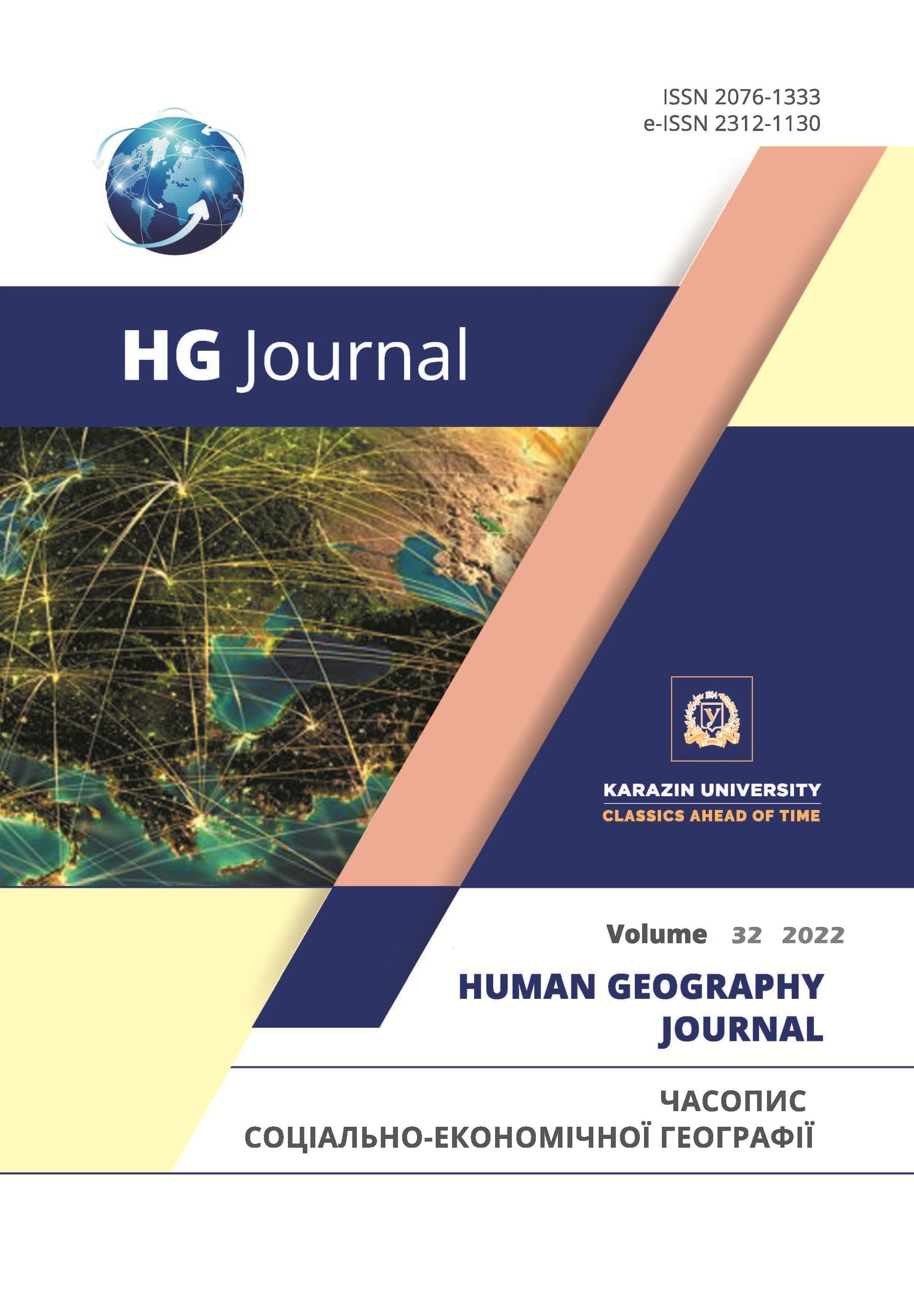The place of South Asia in the world economy: human-geographical, geo-economic and geopolitical aspects
Abstract
The article deals with the positioning of South Asia in the world economy in the XXI century as its place in the flows of goods and services, finances, humans and technologies. The information base of the research is newest available statistical data of the UN institutions and the World Bank. Intraregional diversity as disparities between countries is shown. The entrenchment in the world economy is proved by GDP growth, dynamics of foreign trade and foreign direct investments. The main human-geographical features of the region are substantiated: asymmetricity with India as extremum, contrasts, and rather low transnationalization. Demographical and social, economic contrasts and geopolitical tensions of South Asia, that has deep historical and cultural roots, are distinguished. The structure of South Asia's foreign trade is characterized by groups of goods and technological classification. The typical feature for the developing countries regions is the predominance in exports of low technologies and resources-based manufactures. The unique for South Asia is the high share of primary products in imports, that reflects food and raw material dependence. Based on the technological classification The last one applied for regarding the differentiation by countries in its ties with geographical factors.
Geo-economic aspects are determined by the position among other macro-regions of the world, the degree of ties with geo-economic leaders, geographical features of international trade and investment flows. Economic integration is considered in the context of the functioning of the South Asian Association for Regional Cooperation, which includes all countries of the region. The potential growth of the role of interstate economic association for intensification of intra-regional ties is noted, which will also strengthen the position of South Asia in the world economy as a consequence. Conflicts between countries, political and ideological differences often do not contribute to the consolidation of efforts of the countries in the region. Staying in the sphere of influence of different global geopolitical players, as well as the interpretation of India as one of such actors, in particular its opposition to China, bring difficulties in strengthening the place of the region and, in particular, India, in the world economy.
Downloads
References
Bliy, H. de, Muller, P., & Shabliy, O. (2004). Heohrafia: svity, rehiony, koncepty [Geography: Realms, Regions, and Concepts]. Кyiv: Lybid, 740 p.
Knysh, М. (2019). Suspilna heohrafia krayin, shcho rozvyvayutsia: problem teorii, metodologiyi ta metodyky: monography [Human geography of developing countries: problems of theory, methodology and methodics: monograph]. Lviv: Publishing center of Ivan Franko LNU, 276 p.
Suspilno-politychni transformatsii v krainakh Skhodu na suchasnomu etapi: kolektyvna monografiya (2012). [Socio-political trans-formations in the countries of the East at nowadays period: collective monography]. Кyiv: Institut shodoznavstva im. A. Yu. Krymskoho, 220 p.
Yurchyshyn, V. (ed.) (2019). Torhivelni viyny suchasnosti ta yih vplyv na ekonomichne zrostannia i rozvytok u sviti ta Ukrayini [Modern trade wars and their impact on economic growth and development in the world and in Ukraine]. Кyiv: Zapovit, 190 p.
Fukuiama, F. (2019). Politychnyy poriadok i politychnyy zanepad. Vid promyslovoyi revolutsii do globalizatsii demokratii [Political order and political decline. From the industrial revolution to the globalization of democracy]. Кyiv: Nash format, 608 p.
Shabliy, О., Vlakh, M., & Kotyk, L. (2018). Strukturuvannya heohrafichnoi nauky: istorychnyy dosvid i suchasni tendentsiyi [Structuring of Geographic science: historical experience and modern trends]. Materialy Vseukr. nauk. seminaru, prysvyach. 110-littyu vid narodzhennya prof. O. T. Vashchenka (m. Lviv, 13.12.2018). Lviv, 2018. P. 55-64.
Acharya, M. R., Mostofa, S. M., Ware, H., & Halder, R. (2018). The Belt Road Initiative and the Future of Globalisation. Perspectives from South Asia. Peace and Security Review, Vol. 8, No. 18, Third Quarter, P. 1-11. Retrieved from https://www.bipss.org.bd/pdf/Review%207-1-19.pdf
Arise. Integrated Industrial Platforms (2022). Retrieved from https://www.ariseiip.com/project/gdiz
Faostat. Food and Agriculture Organization of the United Nations. (2022). Retrieved from https://www.fao.org/faostat/en/#data
UNDP (2021). Human Development Report 2020: The next frontier. Human Development and the Anthropocene. Geneva. 412 p. Retrieved from http://hdr.undp.org/sites/default/files/hdr2020.pdf
Lall, S. (2000). The technological structure and performance of developing country manufactured exports, 1985–1998. Oxford development studies, 28(3), 337-369. Retrieved from https://doi.org/10.1080/713688318
Majumder, R. (2020). Globalisation, technology and employment: looking back. MPRA Paper. Munich. 31 p. Retrieved from https://mpra.ub.uni-muenchen.de/id/eprint/110077
Pharmaceuticals Export Promotions Council of India (2021). Pharmexcil. Retrieved from https://pharmexcil.com/uploads/tradestatistics
UNCTAD (2021a). UNCTAD Stat Data Center: tables. Retrieved from https://unctadstat.unctad.org/wds/TableViewer/tableView.aspx
World Bank (2022). World Bank Open Data: tables. Retrieved from https://data.worldbank.org/indicator
UNCTAD (2021b). World Investment Report 2021: Investing in sustainable recovery. Geneva, 2021. 280 p. Retrieved from https://unctad.org/system/files/official-document/wir2021_en.pdf
IOM (2021). World Migration Report 2022. Geneva. 540 p. Retrieved from https://publications.iom.int/system/files/pdf/WMR-2022.pdf
Copyright (c) 2022 Olha Mamchur, Iryna Vanda

This work is licensed under a Creative Commons Attribution 4.0 International License.




